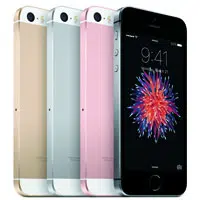Relying on Android or alternatives to NFC for successful mobile payment services in a country with one of the world’s largest iPhone market shares and high contactless card use is “unrealistic”, the group of Australian banks seeking access to the iPhone’s NFC functionality say in their latest submission to the Australian Competition and Consumer Commission (ACCC).

Bendigo and Adelaide Bank, Commonwealth Bank of Australia, National Australia Bank and Westpac Bank began their campaign to encourage Apple to open access to the NFC technology within its handsets in July 2016.
The banks said the introduction of third-party mobile wallets in Australia on a non-exclusive basis would “increase competition, customer choice and confidence, innovation and investment in mobile wallet and mobile payment services across the industry”.
Their latest submission to the ACCC comes as Mastercard reveals that more than four in five Australians (82%) are now using contactless payments every week — 26% are aware that they have NFC mobile payments on their phone and, of those that are not aware, 36% would consider using it.
Collective negotiation
“The applicants developed their own NFC mobile wallets on the Android platform before any of the current multi-issuer mobile wallets were announced,” the banks write. “They now participate in or are in negotiations with multi-issuer wallets and look forward to collectively negotiating on the issue of NFC access with Apple and offering Apple Pay to their customers.
“They also expect that other providers of mobile wallets and other NFC functions would emerge to meet particular demands. These might be merchants, telecommunications providers such as Optus Pay in Australia or SingTel and Orange internationally, and financial technology startups such as Myki Plus, an NFC app to interact with Melbourne’s public transit cards — but only on the Android platform.
“Some of these international examples have relied on the Android platform and on non-NFC point of sale technologies such as PIN or barcodes. These countries have less NFC infrastructure in place than Australia and Android has a much greater presence.
“These alternatives are unrealistic in Australia, which has the world’s highest adoption of contactless NFC card payments and one of the world’s highest iPhone market shares, particularly among customers likely to use mobile payments.”
“In Australia, potential mobile wallet providers other than Apple are locked out of the established payment infrastructure in respect of the clear majority of relevant customers,” the banks add. “NFC access on the iPhone would greatly enhance these opportunities and provide substantial public benefits.”
‘Contactless embraced’
Australians are most frequently using contactless cards at supermarkets (54%), general retail stores (22%) and petrol stations (11%), the Mastercard research finds. 33% have been “annoyed” when a store didn’t offer support for the technology, and one in 10 have avoided a store that they knew didn’t offer it.
“Overall, Australians see tap and go as a convenient and time-saving way to pay,” says Garry Duursma from Mastercard. “Australians have largely embraced contactless payments as a part of their everyday lives, indicating that consumers are starting to gain a real understanding and appreciation for the benefits of contactless.
“The survey findings indicate an increasing demand on retailers to take advantage of more innovative payment methods, with the majority of Australians believing that businesses that offer contactless technology are making it easier for their customers.”
Apple Pay launched in Australia in November 2015 with support from American Express. The company met with resistance from the banks before ANZ became the first of the country’s big four to add support for the service in April 2016.
Timeline
- 13 February 2017: Australian banks drop Apple Pay fee request to focus on iPhone NFC access
- 10 February 2017: Australia’s retailers join the banks in their battle with Apple Pay
- 10 February 2017: Apple Pay boss Jennifer Bailey says she believes Australians will be “happy to switch banks” in order to use Apple Pay
- 10 February 2017: ING Direct and Macquarie Bank sign up for Apple Pay
- 6 February 2017: Apple accuses Australian banks of Apple Pay transaction fee ‘trojan horse’
- 29 November 2016: The ACCC denies authorisation to Australian banks over Apple Pay negotiation in a draft determination
- 17 October 2016: In an extensive response to the ACCC, the banks criticised Apple’s decision to restrict access to the NFC within its handsets, calling it “completely baseless”
- 31 August 2016: Apple insisted that opening up access to the NFC technology within its handsets was not open to negotiation with any bank
- 30 August 2016: Supermarket giant Coles put its backing behind the banks with its own submission to the ACCC
- 22 August 2016: The ACCC ruled that it would not grant the banks interim authorization to collectively negotiate
- 10 August 2016: Apple spoke out for the first time about the banks’ submission, saying it was made up of “factual and legal misstatements”
- 27 July 2016: Bendigo and Adelaide Bank, Commonwealth Bank of Australia, National Australia Bank and Westpac Bank submitted their request for negotiation to the ACCC
Next: Visit the NFCW Expo to find new suppliers and solutions
Meanwhile, the big banks continue to refuse to share similar details of Australia’s New Payment Platform. While paying lip service to fostering innovation in the ‘Overlay Services’, no actual details have been publicly released. By holding these details close to their chest and only sharing with captive organisations (step forward BPay, a company wholly owned by the banks) the vibrant Fintech startup industry is stifled and the current market oligarchy of the big banks continues.
So it’s a bit rich for the banks to demand Apple release the specs for Apple Pay while steadfastly refusing to release the same information for the New Payment Platform.